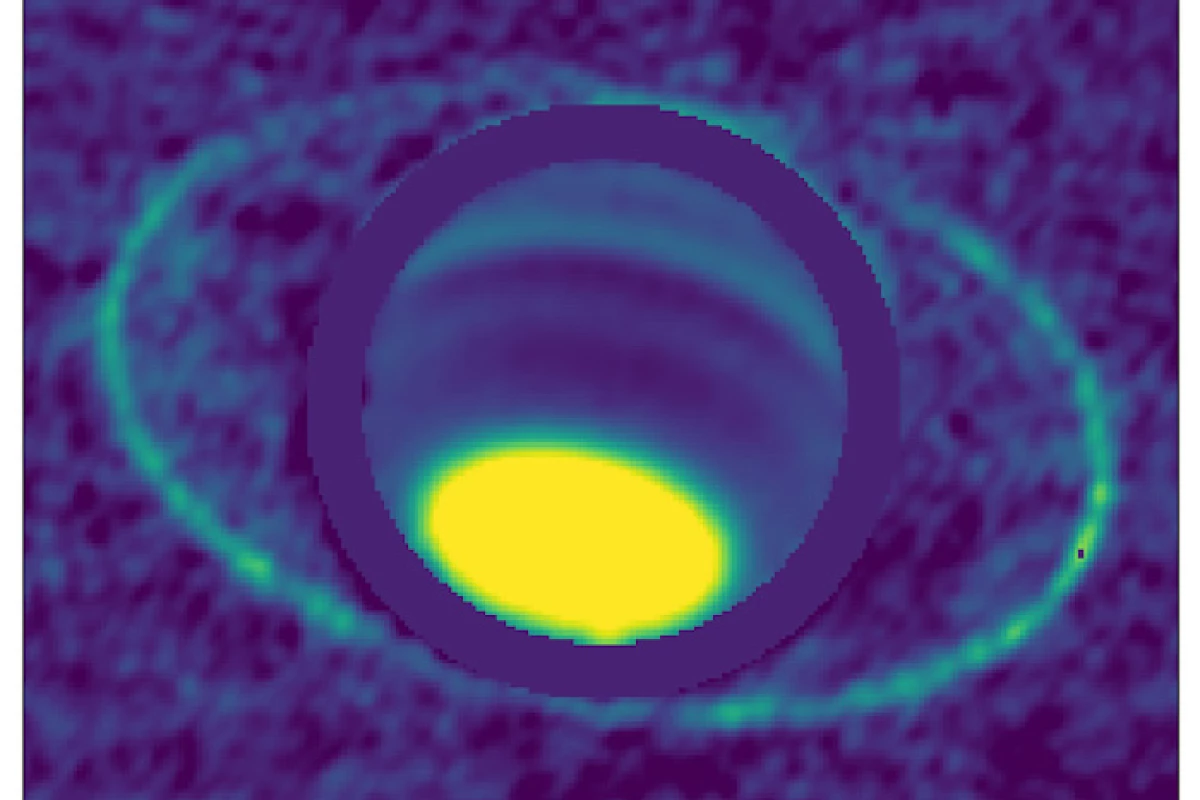Although Saturn sports the most impressive ring system in our neighborhood, it's not alone. Uranus is also packing some rings, although they're usually too faint to see without a powerful telescope. But a striking new set of images shows these rings in very clear detail thanks to thermal imaging, while also allowing astronomers to measure their temperature for the first time.
While Saturn's ostentatious rings have been known since 1610, Uranus's faint ring system is a relatively recent discovery, only made in 1977, and more rings were discovered when Voyager 2 whizzed past for a closer look in 1986. The rings only reflect a small amount of light in the optical and near-infrared parts of the spectrum, which normally makes them hard to see.
That historical dimness makes the new shots, snapped by the Atacama Large Millimeter/submillimeter Array (ALMA) and the Very Large Telescope (VLT), all the more astounding. In these thermal emission images, the first ever taken of Uranus, the rings are clearly visible around the smelly, unfortunately-named planet. The dark bands in the upper atmosphere are thanks to large amounts of molecules that absorb radio waves, while the bright spot at the north pole indicates an area mostly devoid of these molecules.
Although these heat-measuring images suggest that the rings must be quite warm, they're actually colder than you might think. The team was able to take their temperature for the first time, and found that they're a chilly -320° F (-195.6° C).

The study also helped to confirm that Uranus's brightest and densest ring, the epsilon ring, is very different to other known systems. Saturn gets its trademark bling thanks to a ring system made up of differently-sized objects, from microscopic dust particles to roughly house-sized boulders. But Uranus's rings are mostly made up of relatively large objects.
"We already know that the epsilon ring is a bit weird, because we don't see the smaller stuff," says Edward Molter, an author of the study. "Something has been sweeping the smaller stuff out, or it's all glomming together. We just don't know. This is a step toward understanding their composition and whether all of the rings came from the same source material, or are different for each ring."
On top of that, the objects in Uranus's rings are much darker than those in the Saturnian system, and the rings themselves are much narrower.
"The rings of Uranus are compositionally different from Saturn's main ring, in the sense that in optical and infrared, the albedo is much lower: they are really dark, like charcoal," says Molter. "They are also extremely narrow compared to the rings of Saturn. The widest, the epsilon ring, varies from 20 to 100 km (12 to 62 mi) wide, whereas Saturn's are hundreds or tens of thousands of kilometers wide."
The team says this kind of work opens Uranus up to further exploration, by projects like the upcoming James Webb Space Telescope.
The research was published in the Astronomical Journal.
Source: UC Berkeley




